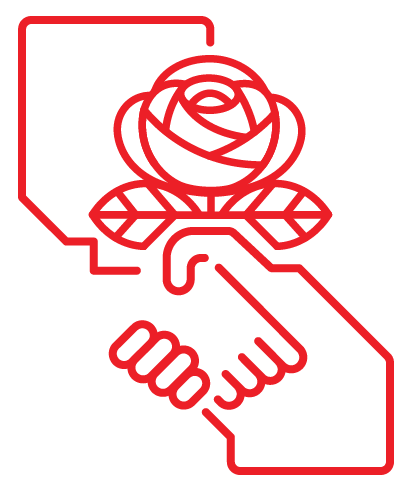Notes for Group Leaders
This reading and discussion series was developed by the Labor Education subcommittee of the East Bay DSA Labor Committee. We have run the series several times now, revising each time based on feedback from participants and group leaders. We have done groups in-person, all-Zoom and hybrid. The current version has expanded from three sessions to four to allow more time for the discussion of socialist strategies in the labor movement and the role of socialists. We would love to hear from anyone using this curriculum, both to know where and how it has been used, and to give us any feedback you may have. Contact us at fglasscft@gmail.com.
Contents of this document:
Goals of Labor 101
Timeline for promotion and organization
About the Key Topics lists
Guidelines for choosing articles
Resources for getting involved
Goals of Labor 101
The series was designed primarily for DSA members and friends who are less familiar with unions, labor history and socialist strategies in the labor movement. We hope the series will help these comrades understand both the labor movement and DSA’s labor work. We have also had a few comrades participate who were already active in the labor movement or in labor support but were interested in understanding the concepts and history covered in the series.
The overall concepts the series covers are:
Why workers and their organizations are at the core of the socialist project.
The history of the labor movement in the U.S.
What unions do, should do, and sometimes don’t do.
What it means to be a socialist in the labor movement.
Timeline
This is our timeline for the logistics and publicity for the series. A folder in the series material will show you samples of what we have used; feel free to use or modify them.
One to two months before:
Identify group leaders / co-leaders
Create a signup form and a link and QR code going to it
Prepare promotional material (links or QR codes should be included)
Put promotions in chapter newsletters, announce at chapter meetings and committees
Contact key chapter labor activists, new member coordinators, and others about possible participants.
Find a location for the series (Chapter office? Library or community meeting room? Home?)
Based on signups [which should include a participant availability grid], decide the dates, and reserve the meeting space.
Choose a current / local article to read for Session Four.
Identify chapter committees or other local groups related to labor that participants could work with.
Two weeks before:
Post revised promotions with the dates and location.
Contact each potential participant by phone or text welcoming them.
Send each potential participant the series outline / curriculum.
Confirm the meeting space(s).
Read the articles and contact us with questions or access problems.
One week before:
Remind all participants about the date, time, and place, and about the reading for the first session.
About the Key Points lists
Most of the discussion prompts in the session outlines have a Key Points list following them. These are points that we hope will come up in that discussion (but it is not essential that all of them come up: a good discussion of some of them is better than “going over” all of them). We encourage group leaders to review these before each session so that they are able to steer discussion toward these or to bring up some of the key points that participants did not.
Guidelines for choosing articles
The curriculum for Session Four asks the group leader to choose a current labor struggle, perhaps locally relevant (local struggle, state, or national struggle that includes workers in your area) or with some tie to the chapter’s work. Try to pick an article that will let participants use ideas from the series to analyze it. This might include what unions or other worker organizations are involved, how they are organizing, the context and history of this particular struggle, what workers are learning from it, or how socialists are involved. If chapter members are involved in local labor issues they might suggest an article or even come to Session Four to present and discuss it. DSA newsletters, Labor Notes and Jacobin might be good places to look.
For Session Three you could choose an alternate history reading in place of The Long Deep Grudge excerpt, perhaps one more local or more familiar to the group leader(s). Try to choose a reading that includes openings for discussion of:
Strategies for bridging divisions in the workplace and the working class
The role played by socialists
We ask that you keep the LaBotz reading for Session Three; we think that familiarity with the rank-and-file strategy articulated there is essential in understanding DSA’s current labor work.
